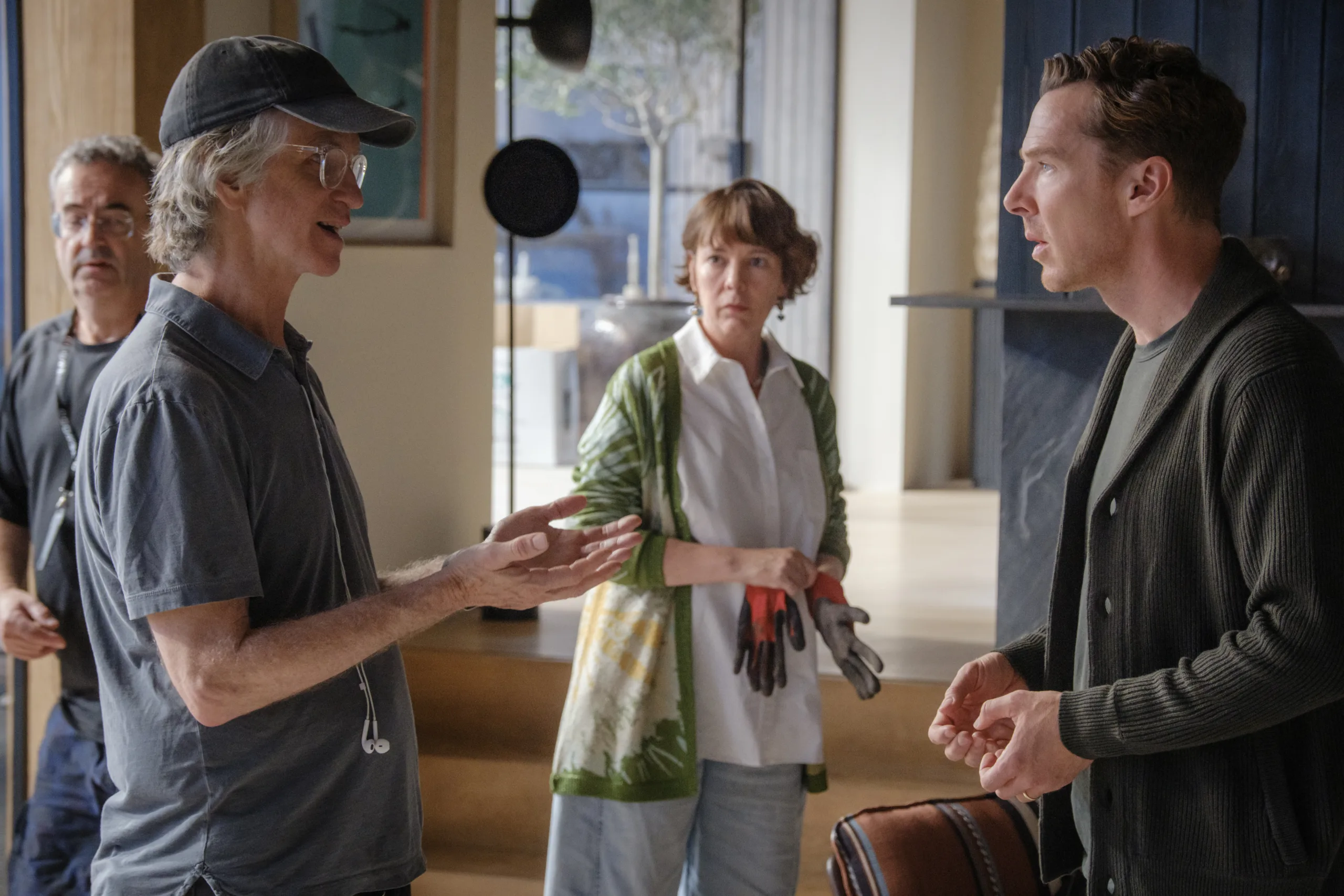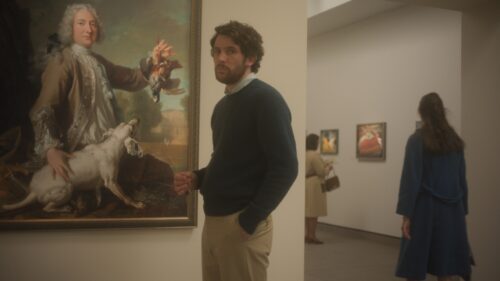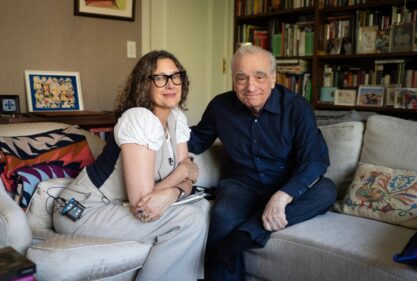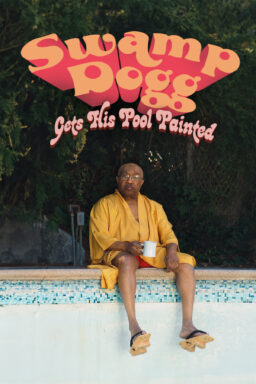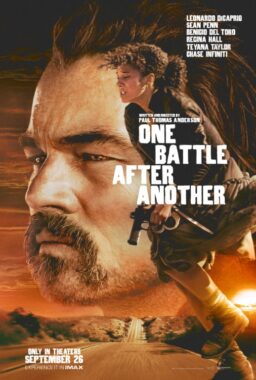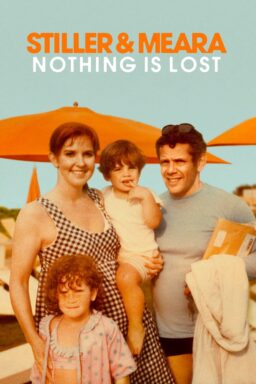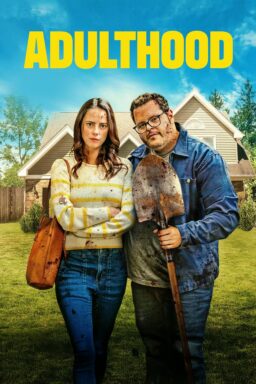All’s fair in love and war, as they say, and few literary couples have been through the trenches as profoundly and as frequently as the Roses. In the original 1981 Warren Adler novel (and Danny DeVito’s well-regarded 1989 adaptation), “The War of the Roses” centered on an affluent couple whose seemingly perfect marriage begins to crumble under the weight of a sudden and acrimonious divorce battle. The results are biting, acid-tongued, and hardly the stuff of rom-coms, particularly in DeVito’s film which pits Michael Douglas and Kathleen Turner against each other at the height of their powers. It’s also the kind of triumph that would make any remake a daunting prospect.
But when screenwriter Tony McNamara (“Poor Things,” “The Favourite”) was approached to develop a vehicle for actors Benedict Cumberbatch and Olivia Colman, it was that classic story that drew McNamara’s eye. That became the basis for the upcoming “The Roses,” directed by Jay Roach (“Trumbo,” the “Austin Powers” films); here, the Roses are comprised of Theo (Cumberbatch), an egotistical architect, and Ivy (Colman), a sharp-tongued chef de cuisine. Years into their relationship, their twinned ambitions are starting to put strain on them—Theo’s Hail Mary maritime museum design and Ivy’s punny crab shack (“We’ve Got Crabs!”). And in classic Roses fashion, it’s not long before the very drive that drew them together is now pulling them apart—no matter how feebly their friend group (including Andy Samberg and Kate McKinnon as a parallel couple who manage their conflicts in, erm, interesting ways) can try to intervene.
For the film’s impending release, McNamara and Roach sat down with RogerEbert.com to discuss the challenges of adapting such a classic story, getting the tone just right, and the role that production design can play in creating a psychological space for two characters to drive each other crazy.
This interview has been edited for length and clarity.
Tony, what was your relationship with either the original novel or the Danny DeVito film, and what was the kernel of the idea for choosing to re-adapt it?
TONY MCNAMARA: I loved the original movie. I thought it was great, and I certainly had no intention of trying to do that. Because you can’t really improve on it. I’m also a fan of the novel, and I think I wanted to focus on the marriage part rather than the divorce part. So the idea of reimagining it came when Ben and Olivia [said they] wanted to do a movie together, and we searched around for suitable material. I decided I didn’t want to remake it, but I would reimagine it as, basically, a story about contemporary marriage. Instead of two people who want to rip each other apart, these are two people who are desperate to stay together, but just don’t have the skill set to do it very well.
The film came about because Benedict Cumberbatch and Olivia Colman wanted to work together, and it was a matter of finding the right project.
TN: In a way, yeah. They had come to us and said they wanted to do something together. The studio said, “We’ve got [The War of the Roses]. What about remaking it?” I said I didn’t want to remake it, but I’m really interested in a reimagining. I think I just wanted to create something that was a contemporary story about what it’s like to be married now. Because in most couples today, both partners have to work, and I was interested in that. Everyone’s very ambitious, and how do you contain the ambition and the drive for success that pulls apart a marriage? How does your ego contain that? That was really the impetus of what I wanted to write about.
Jay, tell me about how you got involved in the project.
JAY ROACH: Tony and I had talked about doing something else, and I’d just gotten to know Benedict a little bit. We share a lot of the same agents, I think, and it all came together in a kismet way in a very short time, actually, from when we first started talking with each other. I was instantly attracted to working with Tony. I’d been a real fan of his TV show, “The Great,” and I knew about “Poor Things,” but it hadn’t come out yet. I’d seen “The Favourite.” Then I thought about Benedict and Olivia inhabiting those great characters [in “The Roses”]. I was nervous about doing a remake; the expectations were so high. I love Danny DeVito, I really like Kathleen Turner, and Michael Douglas. It was hard to imagine wanting to take that on until I read the script.
Then, I went, “Oh, this is really this whole other thing about the tension between the way a real romance can elevate you and save you from your own self-loathing bullshit and loneliness. And in its best form, it can become a trust relationship, where you can say anything and be just as dark and witty as these two amazing British people. But I also envied that banter, as an American, especially as a Southwestern kid, anybody who can speak that fast and that hilariously. I’ve worked with a lot of English creators and artists: Sacha Baron Cohen, Douglas Adams. I got to work with Mike Myers for a while, who’s kind of a wannabe Englishman who has pulled it off beautifully a few times. I always have British banter envy—to see that much fun with the language while also exploring the darkest places alongside two of the best actors in the world.
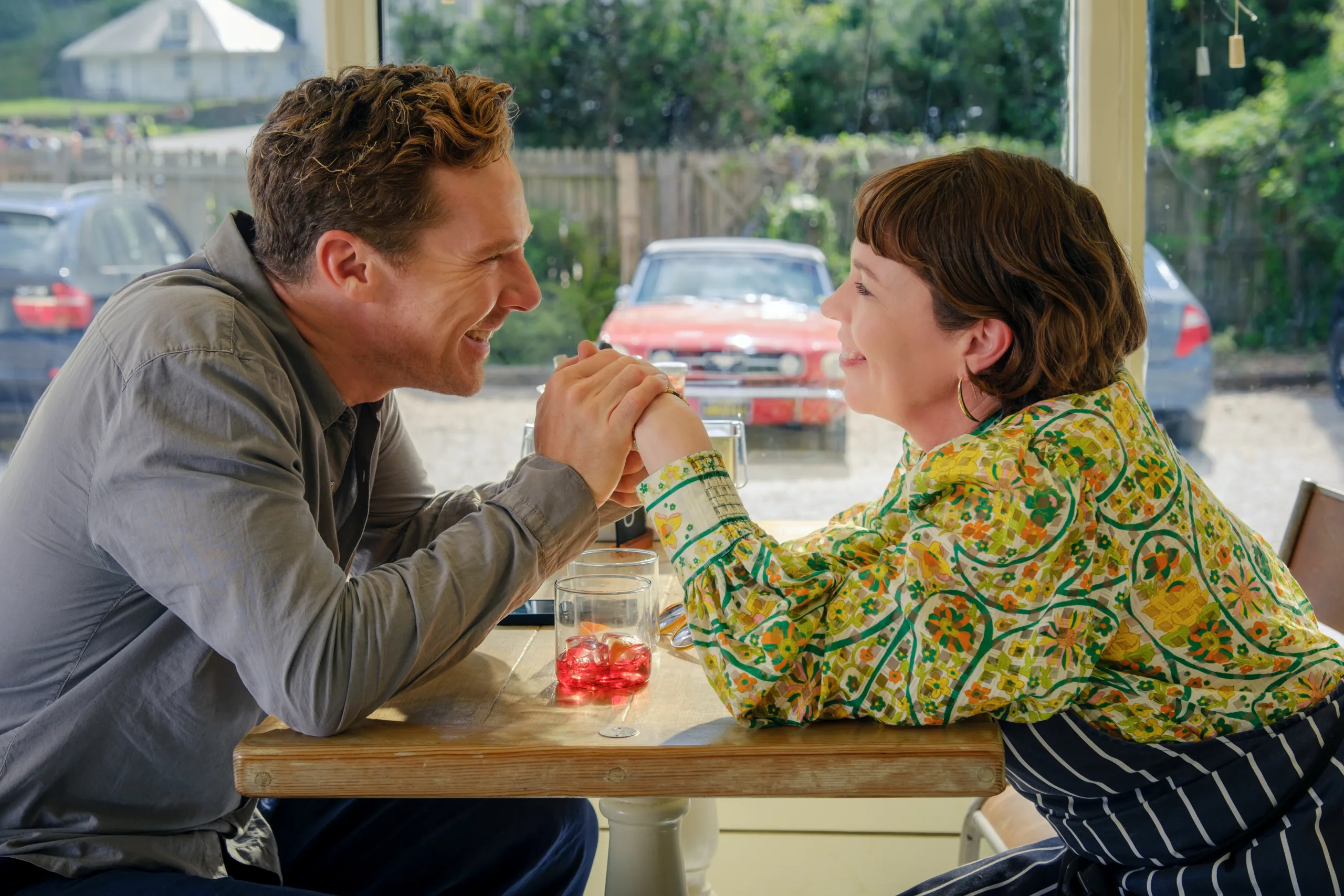
Jay, you’re known for directing comedies, but the last few years have seen you firmly in a kind of dramatic mode with works like “Bombshell” and “All the Way.” What was it like returning to this mode of filmmaking?
JR: It’s funny you put it that way, because I got into film because of comedies like this—”The Graduate,” “Shampoo,” darkly funny but cinematic and interesting. Many of the films I’ve made relied on another kind of energy, which was a great and fun experience. When I was reminded of how I used to be so moved by things that could really disturb and upset you, but also delight you and make you howl with laughter, in the presence of a crowd in a theater. It’s an old nostalgia. To have the chance to do that is something new for me. Where the range is this great. It was a wonderful opportunity to delve deeper and revisit the things that initially sparked my interest in filmmaking.
Jay referred to that British sensibility, Tony, and I feel like it’s very telling we have two British characters existing in an American context. Not only that, you’ve moved the original setting from DC to the Bay Area. I’m wondering what those two elements of character and setting informed your adaptation of the story.
TN: Because these characters are so ambitious, they feel there are barriers to that in the UK. I didn’t want them to have extended families or friends to fall back on; I wanted them to leave and pursue their ambitions, having nothing but each other. The idea was that you obviously go to America to pursue your ambition. And the Bay Area was familiar to me, so it was a matter of writing in a context I understood.
Also, the sunniness of that location is an interesting juxtaposition to the dark dynamics that ultimately unfold. I’m also curious about the thought process behind making Theo an architect, particularly with this pet project, the Maritime Museum, to which he has tied so much of his ego. What made you decide on that occupation as both his ambition and the thing that will end up destroying him?
TN: That was one of the first ideas I had: First, I wanted them to both have jobs you could see, that were physical, that had a manifestation in a cinematic sense. The idea of being an architect I sort of reverse-engineered, because I knew they would ultimately make a bad choice, which is a thing a lot of people do: We’ll build a beautiful house, or we’ll have kids, or some external thing will save us, rather than us looking internally at how we’ll save ourselves. It was important to me that they both be really good at what they did and be creative people trying to achieve something admirable. It wasn’t just about money for Theo; yes, there’s a lot of ego in what they do, but on some level, they’re just driven to create. I felt like they had to be on equal terms on that front.
I think there’s a line in the film where Ivy says something to the effect that her conception of an ideal relationship is two ambitious people supporting each other on their upward climbs. And when that gets disrupted, that feels like the beginning of the end. How did that gel with the conception of Theo and Ivy? Jay, what was it like building these characters with Ben and Olivia?
JR: Most of the character design for Ivy and Theo was already in the earliest draft. The fun we had in workshopping stuff was in working with Andy [Samberg] and Kate [McKinnon] as they came in. Tony had a really great instinct to use their relationship as a compare-and-contrast barometer. Kate and Andy already had some excellent ideas that we kicked around, and Tony wrote back in for them.
Especially the design of Kate’s character, Amy, wanting to push the boundaries of the relationship and explore sexuality. She’s such a wild card in a cool way. And Andy’s so funny, so aware of how the characters are going to work and what the tone is. He helped us figure out how to ground that, even though that was going to be a far-out sort of thing.
TN: We developed their characters a little as they got cast. Conversations with them about what would be funny. They were very conscious of the script’s tone, which was so specific that everything had to fit the rhythm and tone. So it was this nice mix of all of us working together to develop how those two would work.
JR: Benedict and Olivia, especially in that dinner scene, and actually the barbecue and gun range too, they were intimidated by Andy and Kate, and vice versa. They were all so eager to connect and to please.
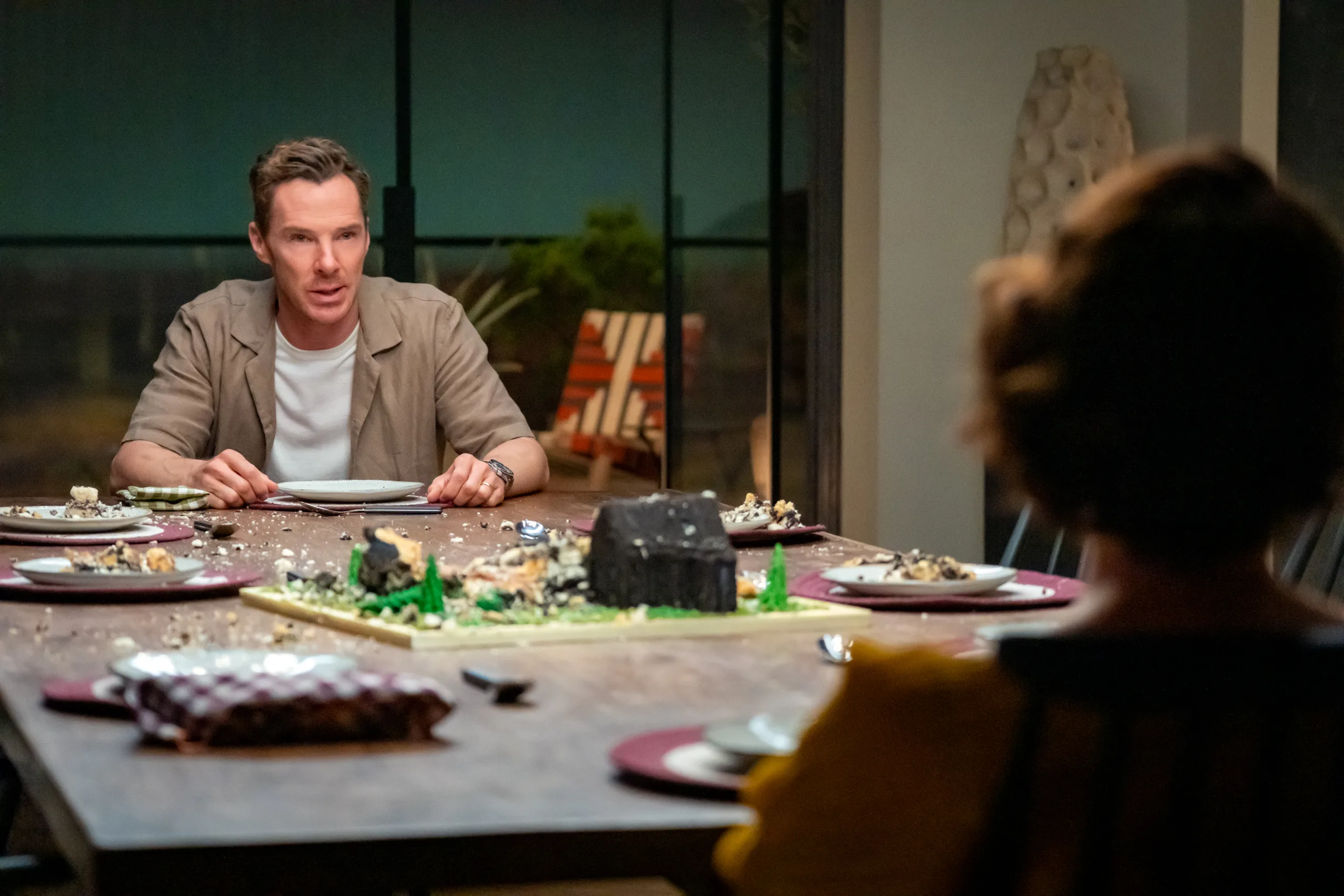
Let’s also discuss production design; with Theo’s architectural work, the house itself becomes its own sort of character. The same applies to the crab shack or the museum. What work did you do with your creative teams to build those?
JR: Mark Ricker is our production designer, and he’s just a master. I’ve done five or six things with him now, and he had so much going on that he wasn’t sure he would be able to do the film. Until he had a flash, much like Theo has on the airplane where he was drawing on the napkin. Mark suddenly sketched this whole thing; some of the sketches he made on the plane were taken directly from a fever dream he had.
We knew the house had to represent a delusional over-commitment to this big presentational thing. We also knew that the dinner scene had to take place there. So we had to bring the friends in, trap them there in this beautiful sort of palace/tomb, and start to tear it apart in a certain way. That was Mark’s genius. We also had some great consultants from real architecture firms, and Searchlight had some valuable connections that helped us out. We just tried to make it real, but also heightened enough to feel like you’re in a big movie.
The Bay Museum, in particular, feels like such a strangely ambitious thing. What discussions did you have about designing this thing that someone would realistically make, but would realistically fall apart at a stiff breeze?
JR: It’s funny you bring that up, because it took some doing. We filmed this in England; the coastal scenes are from South Devon and other locations. However, we continued searching for an actual building that we could digitally tear apart with CGI, but we couldn’t find one. We just kept looking for an American-enough place that still had an architectural flair. I think it was Mark, again, who came up with the idea of doing it as a museum and making it entirely CGI. They created a whole pre-vis that actually became the presentation video, which says, “Welcome to the East Bay Maritime Museum, follow where the sailors have gone into the unknown,” and so on.
But what evolved from that in this really organic way was the idea of the sail, which Theo is really obsessed with putting on top of the building. It becomes his kind of branding; that’s what’s going to make me special, and they put it in the logo —the sail is part of it. But without giving up too much, the sail becomes a huge problem, and a very comedic way to overly express desire.
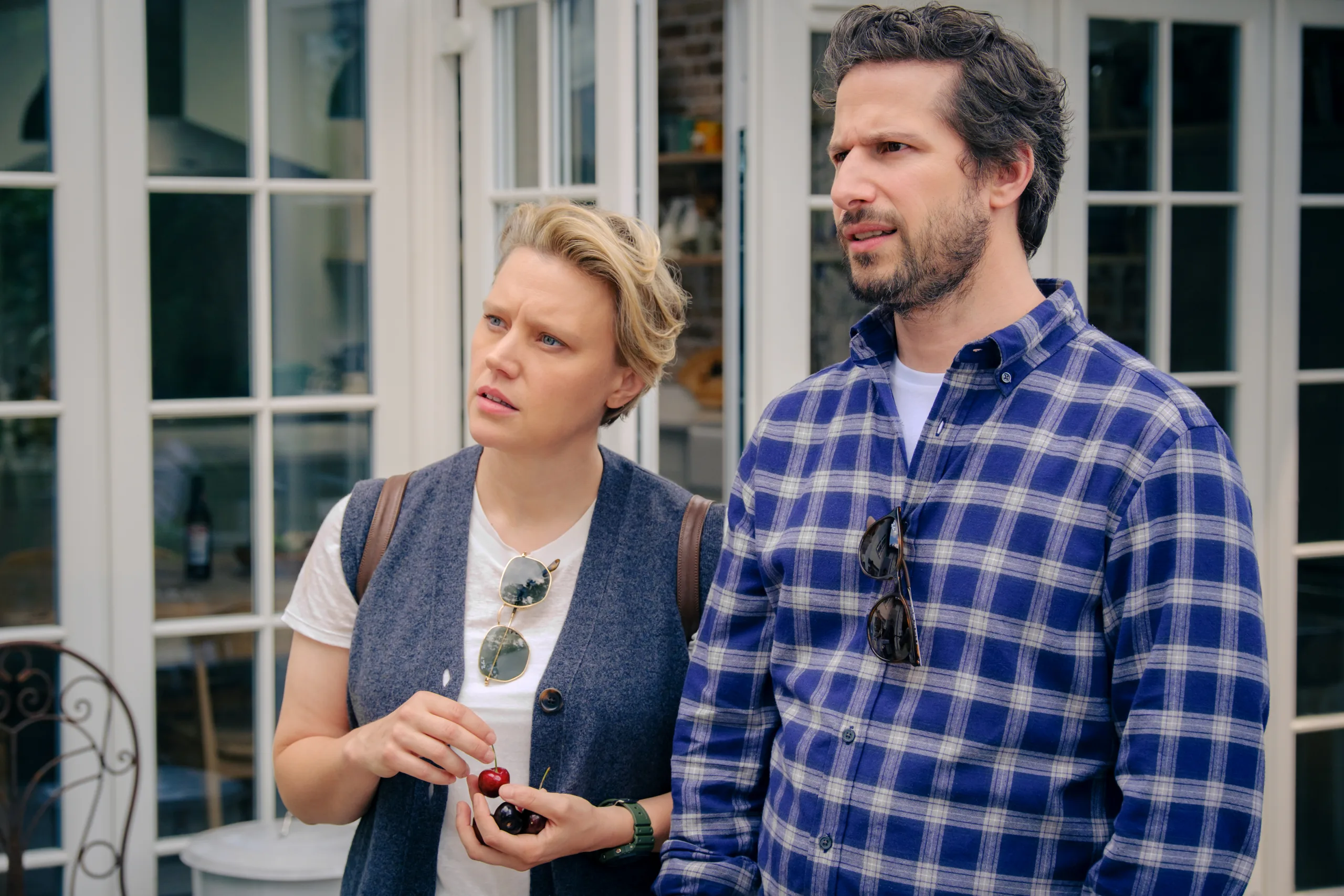
More than Andy and Kate, there’s also a robust supporting cast around the two characters. I’m curious about building those guys, some of whom are other couples who orbit around them. It somewhat lends the movie a more explicitly comedic bent, akin to Soderbergh’s recent “Black Bag,” making it more of a comedy of manners about couples that can serve as a prism through which to view Theo and Ivy.
TN: I knew I didn’t want to spread too wide, in a way. There are probably nine or ten people; it’s a small cast. The idea was to provide them with enough people, including the therapist, the lawyer, two sets of friends, and their work friends. It felt like every duo had to have a view of relationships around our two, who are sort of oblivious to any advice they’re given or anything that’s in front of their eyes.
JR: Jamie Demetriou’s character, Rory, for instance, where he and Zoe Chao decide to try out the British banter they perceive between Theo and Ivy? I might identify more with Rory than anybody else, because I share that envy, and I would be prone to embarrassing myself if I tried to do that.
It also shows how a particularly toxic couple can ripple their behaviors out through a friend group and affect it, which is interesting.
Lastly, I’m curious about the retitle. You mentioned the shift in focus to a different stage in this flagging marriage. Is there a particular reason why this is not a “War” of the Roses?
TN: It just felt like such a different movie. It was not about the war so much; it was about the couple. So I decided to call it “The Roses.” It’s not a completely reimagined film; it just jumps off the book as much as anything.
JR: The film also has a subtitle: “A Love Story,” which was on the cover page of the script. It kept getting lost. Love is a war in a certain sense, but it’s also about the joy of watching it escalate and building from there. Tony takes us up to that kind of war and escalation. But they also just nearly figure it out a couple of times, and that’s great suspense. I thought it was a really wonderful way to reimagine the story.
TN: I was just sort of slightly ironic: “A Love Story.” It sort of is, but not as you normally see it.

